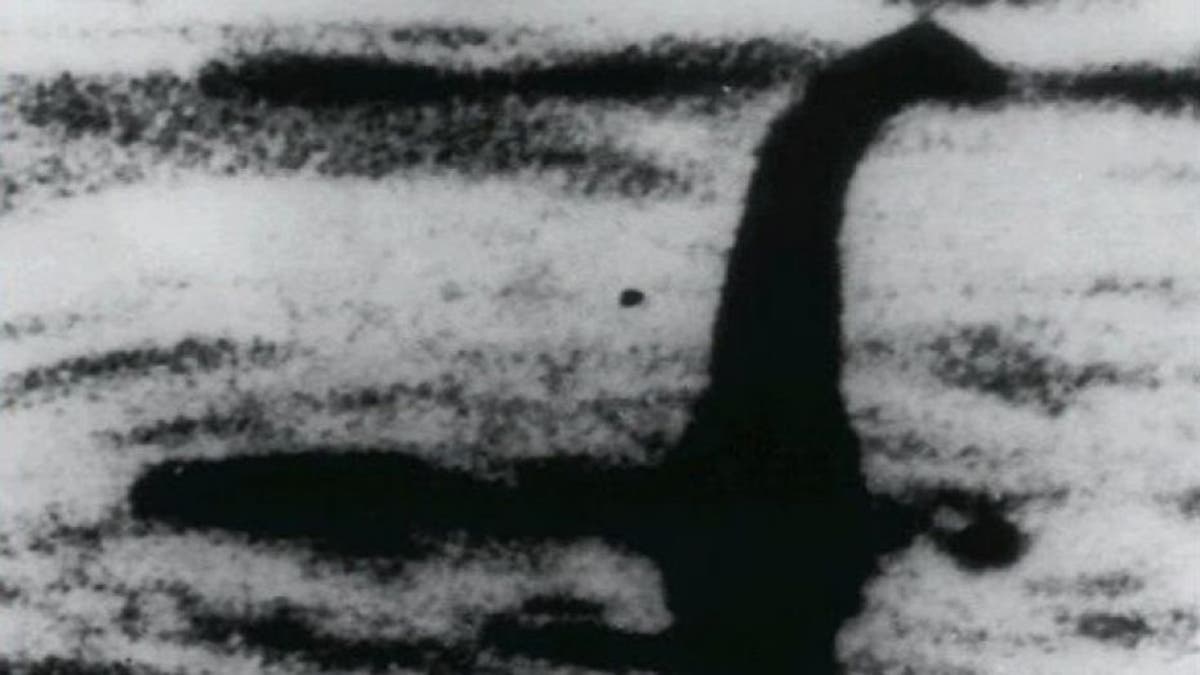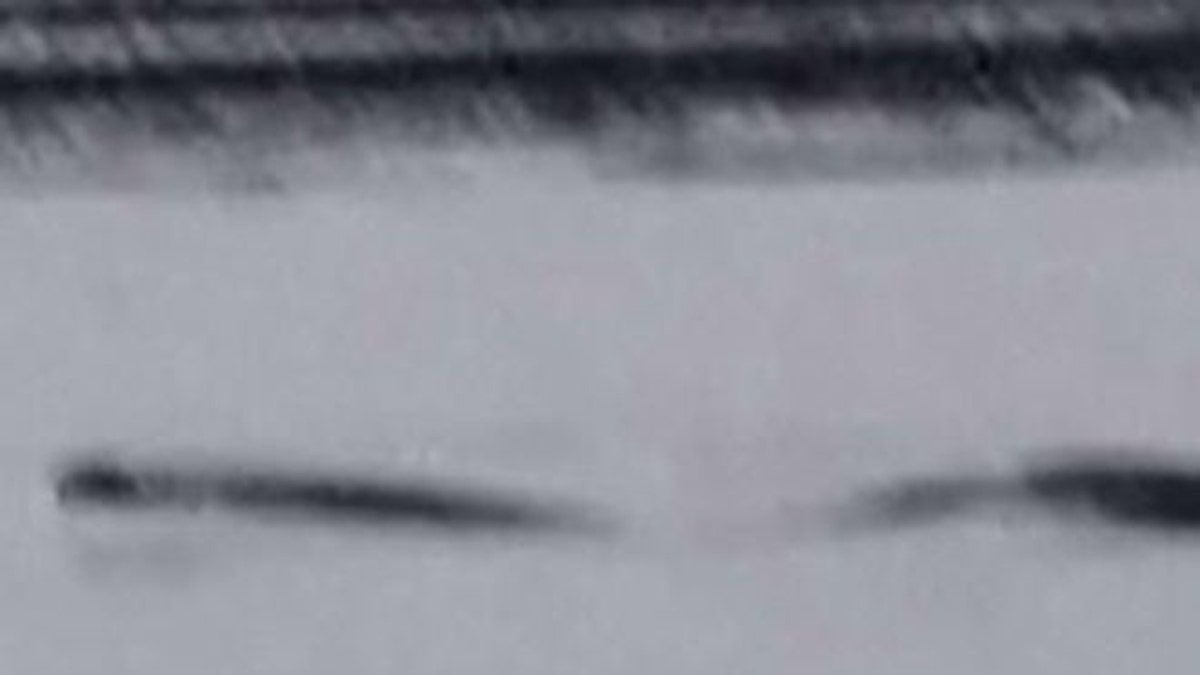There's no reason to think that the Loch Ness monster – colloquially known as "Nessie" – exists. However, the legendary dinosaur-like creature makes headlines every year.
One of Scotland's oldest myths, reports that a creature was living in the Loch Ness lake date as far back as the 6th century.
The first written account was recorded in 565 A.D. in a biography of St. Columba. According to the text, the creature bit a swimmer and was prepared to attack another man when Columba intervened. He ordered the beast to "go back" and it obeyed.
IS THIS CHINA'S 'LOCH NESS MONSTER?' FOOTAGE GOES VIRAL
Hundreds of years later, the legend started to grow. After the construction of a road adjacent to Loch Ness was finished in 1933, giving onlookers an unobstructed view of the lake, a couple allegedly saw an enormous animal they compared to a "dragon or prehistoric monster" cross in front of their car and disappear into the water. The incident was reported in a Scottish newspaper and numerous sightings followed.
Later that same year, the Daily Mail commissioned Marmaduke Wetherell, a big-game hunter, to track and find the sea serpent. Wetherell reported back that he had found large footprints along the lake's shores which he believed belonged to "a very powerful soft-footed animal about 20 feet long." However, upon closer inspection, zoologists at the Natural History Museum determined that the supposed tracks were identical and likely made with an umbrella stand or ashtray that had a hippopotamus leg as a base.

The infamous surgeon's photograph that some people believed was a photo of the Loch Ness monster in Scotland. It was later proven to be a hoax. (AP Photo, File)
But the hunt was not over. By 1934, English physician Robert Kenneth Wilson took the iconic image known as the "surgeon's photograph." The photograph appeared to show Nessie's head and neck and The Daily Mail printed the photograph, later proven to be a hoax.
In a shocking development, in the spring of 1938, South African tourist G. E. Taylor filmed something in the lake for three minutes on 16 mm color film. The film was then obtained by popular science writer Maurice Burton. A single frame of Taylor's film was later published in Burton's 1961 book. However, Burton's analysis concluded it was a floating object.
In July 1955, Peter MacNab took a photograph that depicted two long black humps in the water. But researchers suspected the humps could be a wave effect resulting from three fishing boats traveling closely together.
In 1960, aeronautical engineer Tim Dinsdale filmed a hump that left a wake crossing Loch Ness. Many said that the hump in Dinsdale's 40 feet of film was a boat after contrast was increased in the photo. But in 1993, Discovery Communications produced a documentary, "Loch Ness Discovered," with a digital enhancement of the Dinsdale film. A person who enhanced the film noticed a shadow in the negative which was not obvious in the developed film. By enhancing and overlaying frames, he found what appeared to be the rear body of a creature.
Later on in the mid-1960s, the so-called Loch Ness Investigation Bureau conducted a 10-year observational survey recording an average of 20 sightings per year and in the 1970s underwater photographs of what appeared to be a "flipper" were made public.
Additionally, several sonar explorations, most notably in 1987 and 2003, were undertaken to find the elusive beast — to no avail.

A video dating back to 2009 may provide new evidence of the existence of an Alaskan Loch Ness Monster, Discovery News reported. (DiscoveryNews)
Over the years, more photographs have been taken, but most were discredited as fakes. In 1994, it was revealed that Wilson’s "surgeon photograph" was a hoax masterminded by the revenge-seeking Wetherell. Wilson's monster was actually a plastic-and-wooden head attached to a toy submarine.
In 2007, lab technician Gordon Holmes claimed to videotape the Loch Ness monster, but a marine biologist said that while the tape was among "the best footage [he had] ever seen," it was likely an otter, seal, or water bird.
In the summer of 2011, Loch Ness boat captain Marcus Atkinson photographed a sonar image of a 4.9 foot-wide unidentified object that seemed to follow his boat for two minutes. However, in April 2012 a scientist from the National Oceanography Centre said that the image is of a bloom of algae.
Several others have emerged over the years, including a photograph in 2012, a five-minute video of a "mysterious wave" in the lake in 2013 and a debunked Apple Maps photograph in 2014.
But these hoaxes have still not halted the search. More recently in May 2018, researchers announced they would investigate the waters of Loch Ness and use environmental DNA sampling of the waters to try and identify everything that swims in it.
In April 2019, their study suggested that the fabled monster could have been a giant eel and disproved a common rumor that a plesiosaur had somehow managed to survive the mass extinction event that killed off the dinosaurs 65 million years ago.
"We can't find any evidence of a creature that's remotely related to that in our environmental-DNA sequence data," New Zeland geneticist Neil Gemmels later told BBC. "So, sorry, I don't think the plesiosaur idea holds up based on the data that we have obtained."
"There is a very significant amount of eel DNA," he continued. "Eels are very plentiful in Loch Ness, with eel DNA found at pretty much every location sampled – there are a lot of them. So, are they giant eels? Well, our data doesn't reveal their size, but the sheer quantity of the material says that we can't discount the possibility that there may be giant eels in Loch Ness."
CLICK HERE FOR THE FOX NEWS APP
"Therefore we can't discount the possibility that what people see and believe is the Loch Ness monster might be a giant eel," Gemmels concluded.
Despite the lack of any tangible evidence, the Loch Ness monster has remained popular — and profitable. In the early 21st century, it was thought that it contributed nearly $80 million annually to Scotland’s economy by way of monster merchandise and tours for fans.
Never mind that the question as to whether Nessie ever really existed in the first place remains to this day.
Fox News' Chris Ciaccia and James Rogers, Scientific American, Encyclopedia Britannica, Visit Inverness, the History Channel, The Telegraph, The Daily Telegraph, The Daily Mail, Alaska Dispatch, The Inverness Courier, The Independent, NOVA, A&E, The Smithsonian, Maurice Burton, The Museum of Hoaxes, Discovery Communications, BBC, the National Oceanography Centre, Apple Maps, Google Streetview, The Daily Maverick, the Loch Ness Investigation Bureau, and DNA Survey contributed to this report.





















